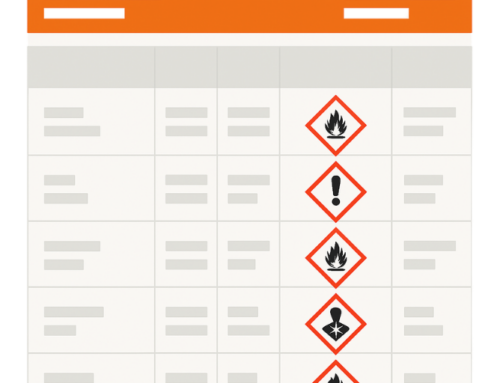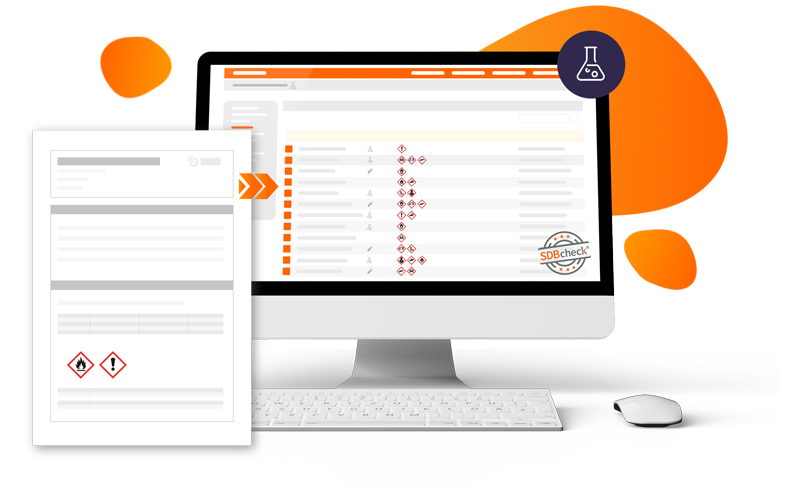
Whether you are a craft business, industrial company or medical practice – as soon as you work with hazardous substances, a structured hazardous substances register is mandatory. It helps to systematically record hazardous substances and their risks and to establish transparent safety structures in the company. The hazardous substances register is a central component of company hazardous substances management and also serves as proof to supervisory authorities and during audits.
In this article, you will find out which contents belong in a hazardous substances register, how it is sensibly structured and which legal regulations – in particular according to the Hazardous Substances Ordinance (GefStoffV)[1] – must be observed. We also provide practical tips for implementation and show you how you can efficiently manage your hazardous substances register digitally.
What is a hazardous substances register?
A hazardous substance register is a structured overview of all hazardous substances and mixtures used in the company. It helps to identify risks, derive protective measures and meet legal requirements. The register is part of the company’s hazardous substance management and also serves as a basis for instructions and audits.
Who is obliged to keep a register of hazardous substances?
According to §6 of the Hazardous Substances Ordinance (GefStoffV)[1] every employer is obliged to keep an up-to-date list of hazardous substances used in the company. This applies to both industrial and craft businesses as well as pharmacies, medical and dental practices, laboratories and cleaning companies.
What content must a hazardous substances register contain?
A complete list of hazardous substances contains, among other things:
✔ Product name / designation of the substance or mixture
✔ Area of application or place of use in the company
✔ Storage location or assigned workplace
✔ Current safety data sheet (SDS), ideally with direct access or link
✔ Person or department responsible
- Tip: Many companies forget to regularly check whether all listed substances are still being used and whether the safety data sheets are up to date.
How is a hazardous substances register structured?
The legislation does not specify a fixed form – a hazardous substances register can be kept both physically and digitally. In practice, the following formats have proven particularly useful:
- Table (e.g. Excel or analog with column structure)
- List (simple document with entries per hazardous substance)
- Dynamic software solution (e.g. with automatic updating of safety data sheets and structured user administration)
It is important that the information is complete, clear and up-to-date at all times – regardless of the form of presentation chosen.
Legal basis and regulations
The most important legal bases for keeping a hazardous substances register are
- Hazardous Substances Ordinance (GefStoffV)[1]in particular §6
- CLP Regulation (EC No. 1272/2008)[2]
- TRGS 400: “Risk assessment for activities involving hazardous substances”[3]
- Occupational Health and Safety Act (ArbSchG)[4]
These regulations specify when, how and with what content the directory is to be kept.
How often does a hazardous substances register need to be updated?
The hazardous substances register must be maintained regularly and updated immediately if necessary – e.g. for new products, changed classifications, changed storage locations or when substances that are no longer used are removed.
How to implement the list of hazardous substances in your company
Practical implementation is best achieved through clear responsibilities, trained employees and centralized, digital administration. Excel lists are often prone to errors and difficult to keep up to date.
- Recommendation: Use SDBcheck® to document hazardous substances efficiently and in compliance with the law – including direct access to safety data sheets.
Conclusion: Document hazardous substances safely – with a system
A well-managed hazardous substance register is more than just a mandatory document: it is a central building block for safety, transparency and legal compliance in the company. With the right structure and digital solutions such as SDBcheck®, you can maintain an overview at all times and are also on the safe side during audits.
Professional references & references
[3]

Infographic for download: List of hazardous substances at a glance
Would you like the most important information in a compact PDF format? Our infographic on the subject of “Hazardous substances register” clearly summarizes the key content, the recommended structure, legal principles and tips for implementation – ideal for printing out, passing on or displaying in the company.
Print tip: The infographic is optimized for DIN A4.
Act now: Digital hazardous substance management with SDBcheck®
A legally compliant hazardous substance management does not have to be complicated or time-consuming. SDBcheck® helps you to implement all GHS requirements efficiently:
✔ Manage hazardous substances digitally – put an end to confusing Excel lists
✔ Safety data sheets always to hand – automatic updates and structured filing
✔ Meet legal requirements – ISO 14001 and 9001 compliant hazardous substances register easy to manage
✔ Protection for your team – keep employees informed at all times and ensure safety
➜ Use SDBcheck® now for simple, digital hazardous substance management!











